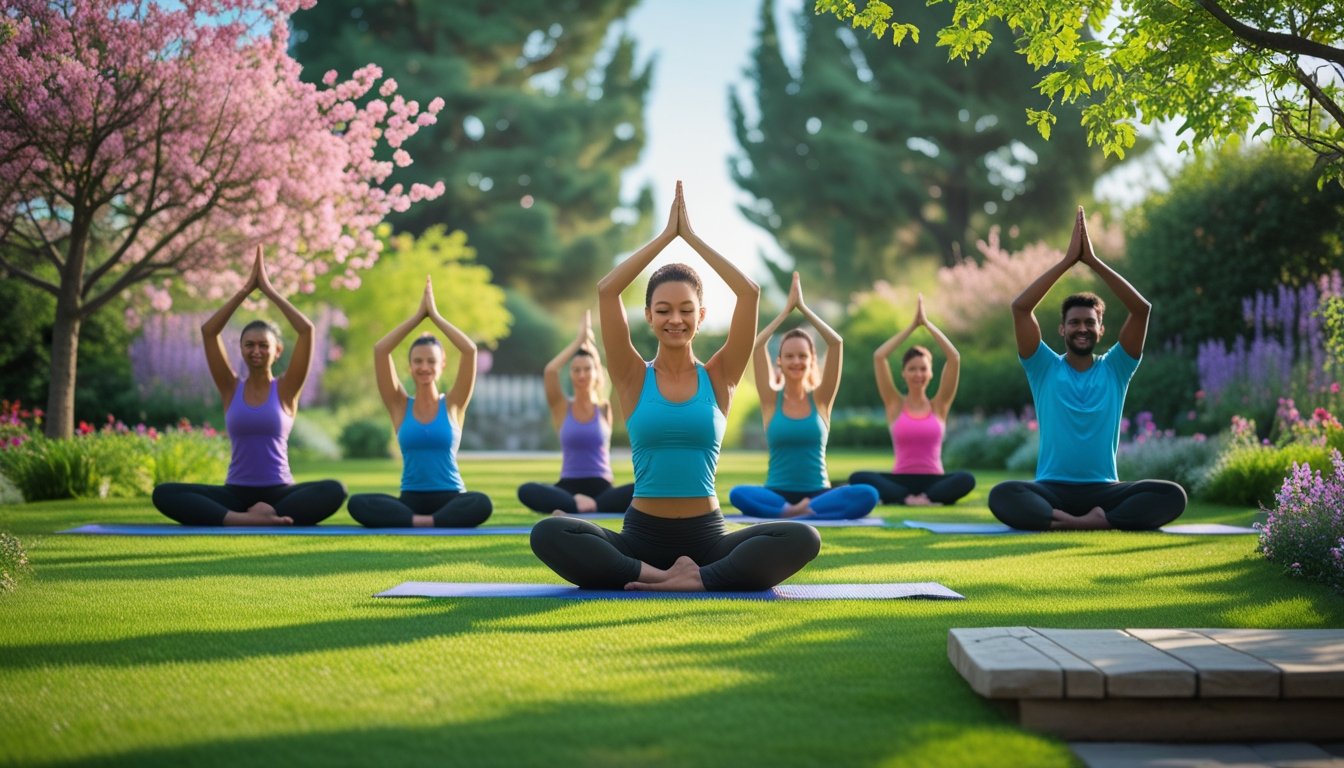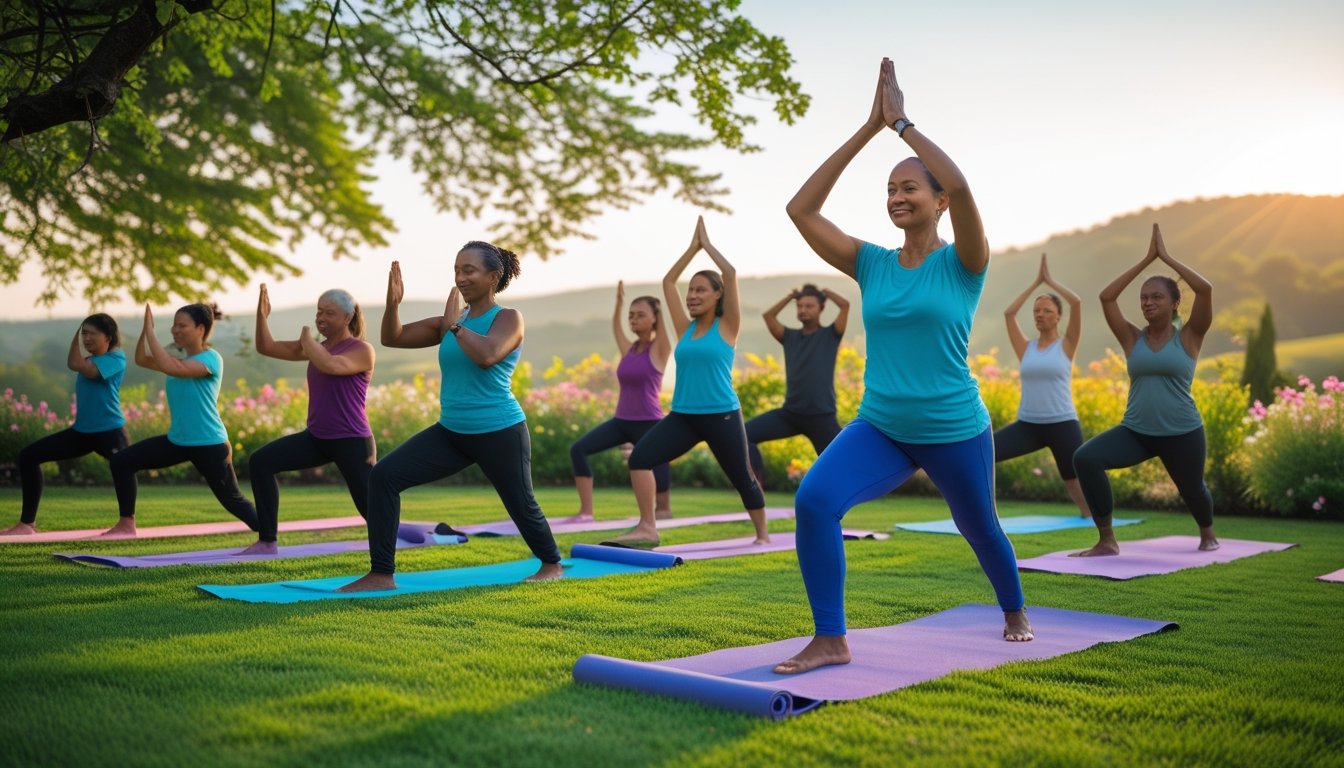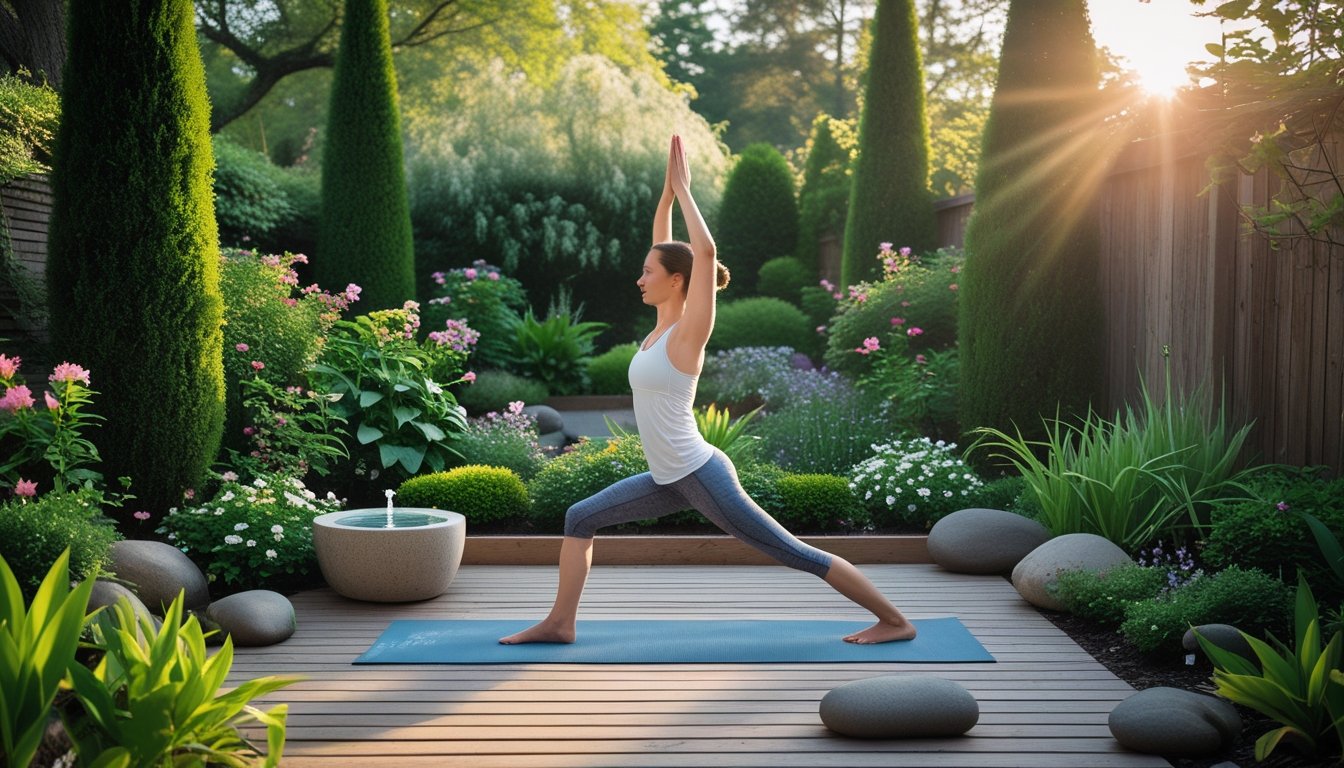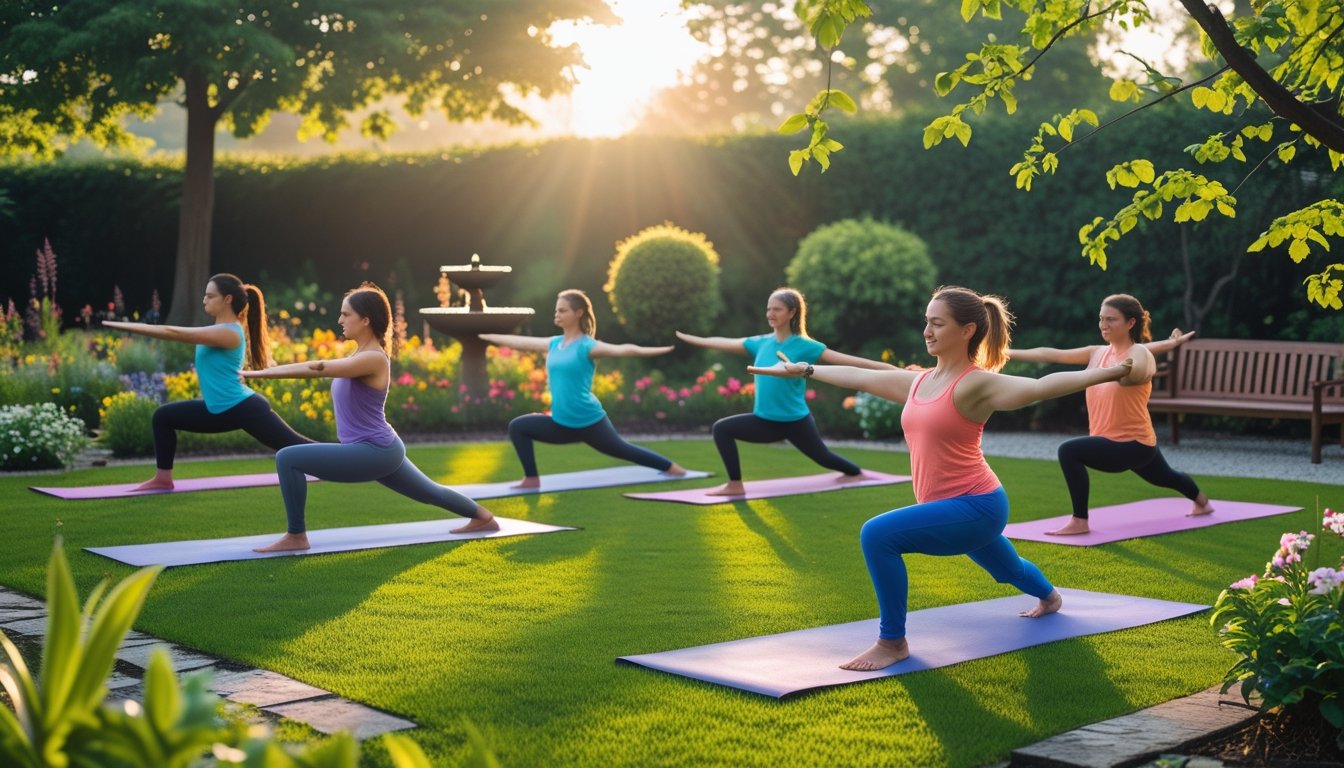Late updated: 24 Jul 2025 10:07
Written by: James Whitaker
Garden Yoga Poses for Outdoor Relaxation and Peace: Enhancing Wellbeing in Nature
In today's fast-paced world, many of us seek relaxation and peace through yoga. Practising yoga in a garden setting can enhance these benefits by providing a natural and calming environment. Incorporating garden yoga poses into your routine not only soothes the mind but also connects you with nature, promoting a sense of serenity and mindfulness.

Our outdoor spaces can be transformed into tranquil havens that support our well-being. By choosing the right yoga poses and setting the scene in our gardens, we create a space that's both personal and peaceful. Imagine practising where sunlight dapples through leaves while the scent of flowers fills the air— it's an experience that rejuvenates the soul and body alike.
As we dive into the world of garden yoga, we'll guide you through essential poses designed for outdoor tranquillity. You'll learn how to cultivate a garden sanctuary that's perfect for unwinding and embracing mindfulness. Let's explore how to turn our backyards into soulful retreats that invite relaxation and peace.
Key Takeaways
- Garden yoga offers mental and physical benefits
- Create an outdoor yoga sanctuary to enhance practice
- Essential poses foster relaxation and mindfulness
Essential Garden Yoga Poses For Outdoor Relaxation And Peace

Garden yoga melds the tranquillity of nature with the harmonising practices of yoga. By integrating specific yoga poses and breathing techniques into our outdoor routines, we can enhance relaxation, improve flexibility, and cultivate a deeper connection with nature. Let us explore ideal poses and practices for this serene experience.
Fundamental Yoga Poses For Calm And Flexibility
Incorporating fundamental yoga poses into our garden practice promotes both inner calm and physical flexibility. Tree Pose (Vrikshasana) helps in grounding our body while enhancing balance. Cobra Pose (Bhujangasana) gently stretches the spine and opens the heart. Practitioners also benefit from Child's Pose (Balasana) which offers a restorative benefit, linking movement with breath. These poses, with their gentle stretches, support our body while calming our mind.
Breathwork And Mindfulness Techniques In Nature
Breathwork synchronises our breathing patterns with mindfulness, deeply enriching outdoor yoga sessions. By practising Bhramari Pranayama or the 'Bee Breath', we can harness tranquillity amidst natural settings. This technique involves slow, deep inhales and exhalations, producing a soft humming sound. Mindful breathing while observing the surroundings—a gentle breeze or rustling leaves—enhances our connection to nature. These practices facilitate an immersive experience, heightening relaxation and presence.
Meditative Sequences For Deep Peace
Engaging in meditative sequences strengthens our mental peace and creates a personal sanctuary. Beginning with short Sun Salutations (Surya Namaskar) warms the body and mind. This can be followed by seated meditation practices focusing on sound or fragrance. Using essential oils or incense can deepen our sensory experience. Pausing to meditate amidst greenery enables an authentic connection to the world around us, fostering deep relaxation and peace.
Safety And Comfort Tips For Outdoor Yoga
Safety and comfort are paramount for a fulfilling outdoor yoga session. A reliable yoga mat not only ensures stability but also provides a comfortable surface for poses. Choosing flat, shaded areas helps prevent physical strain and overheating. Dressing in layers allows adjustment according to the weather. Lastly, staying hydrated is crucial, especially during sunny days. These considerations help us focus on our practice while respecting our body's needs.
Creating Your Ideal Yoga Garden Sanctuary Outdoors

Transforming our outdoor space into a yoga garden sanctuary enhances relaxation and fosters a peaceful practice environment. Key elements to consider include designing a tranquil practice space, incorporating natural elements for serenity, and selecting decor and tools for comfort and ambiance.
Designing A Tranquil Outdoor Practice Space
Establishing a dedicated area for yoga practice lays the foundation for our garden sanctuary. A wooden deck or a stone pathway can provide a stable surface. Shade is crucial—options like a wooden pergola or dappled sunlight filtering through trees create gentle cover. Privacy can be enhanced by placing bamboo or ornamental grasses as natural screens. Clean lines in layout and thoughtful placement of elements ensure a calm, uncluttered feel.
Incorporating Natural Elements For Serenity
Natural elements infuse life and serenity into our yoga space. Lush greenery such as ferns, rosemary, sage, and japanese maple add visual charm and calming scents. Creeping thyme planted between stones not only softens hardscapes but releases fragrance with each step. A water feature like a fountain brings the soothing sound of trickling water, while wind chimes gently resonate with the breeze, enhancing the sensory experience.
Decor And Tools For Comfort And Ambience
Comfort and ambience are pivotal to our yoga garden. Cushions or a meditation cushion offer comfort for seated poses. A wooden bench or hammock nearby provides resting spots. Twinkling lights or string lights introduce a magical aura post-sunset. Prayer flags or a Buddha statue can reflect personal spirituality, while smooth stones and stone sculptures contribute to the overall harmony.
By thoughtfully integrating these components, we cultivate not just a practice space, but a true sanctuary where peace and mindfulness flourish.
Frequently Asked Questions

Garden yoga can offer us a unique blend of exercise and a deep connection to nature. Here, we explore the benefits of outdoor practice and address common queries about practising yoga in the garden.
What are some popular yoga poses suitable for practising in a garden?
Many poses are well-suited for garden yoga. Examples include the Tree Pose, Warrior II, and the Forward Fold. These poses engage the body while allowing us to enjoy the surrounding natural environment.
How can incorporating nature into yoga practice enhance relaxation and serenity?
Nature provides calming effects that can enhance our yoga experience. The sights and sounds of the outdoors help our minds relax, promoting a feeling of serenity while also deepening our focus on mindfulness.
Could you suggest a sequence of yoga postures that are particularly beneficial for outdoor sessions?
A beneficial sequence might begin with Mountain Pose, transition into a Sun Salutation series, and include poses like Triangle Pose and Seated Forward Bend. Finishing with a gentle Savasana under the open sky can deepen our sense of peace.
What are the safety considerations when doing yoga outdoors?
Safety is crucial. Be mindful of uneven ground that can affect balance. Ensure your practice area is free from sharp objects, and wear appropriate sunscreen to protect from UV rays.
How often should one engage in garden yoga to experience a noticeable improvement in peace and relaxation?
Practising garden yoga several times a week can lead to improvements in relaxation and peace. Regular sessions help reinforce the calming impact of outdoor surroundings and the mindful benefits of yoga.
Can garden yoga be practised in all seasons, and what adjustments are necessary for different weather conditions?
Garden yoga can be adapted for any season with proper adjustments. In the summer, practising in early mornings or late afternoons can avoid heat. During cooler seasons, warm clothing and thicker mats may be needed to maintain comfort.
